Alisma plantago – ze xie (Alisma orientalis)
[Medicinal Use] The tuber of Alisma orientalis (Sam.) Juzep, a swamp plant of the Alismataceae family.
[Nature and flavor and meridians] Sweet, cold. Enters the kidney and bladder meridians.
[Effects] Diuresis, dampness removal, and heat relief.
[Clinical Application] 1. Used for dysuria, edema, diarrhea, stranguria, leucorrhea, phlegm retention and other symptoms.
Alisma plantago – ze xie (Alisma orientalis) is sweet and mild in diuresis, and its diuretic effect is similar to that of Poria cocos. It is also a commonly used product for diuresis and dampness removal. Moreover, its medicinal properties are cold and can relieve the heat of the kidney and bladder, so it is particularly suitable for those with dampness and heat. It is often used in combination with Poria cocos, Polyporus umbellatus, and Plantago asiatica to treat dysuria, edema, stranguria, leucorrhea, etc.; it can be used in combination with Atractylodes macrocephala to treat dizziness caused by diarrhea and phlegm.
In addition, this product is used in combination with Rehmannia glutinosa and Cornus officinalis for kidney yin deficiency and hyperactivity of virtual fire, which has the effect of purging the fire.
[Prescription name] Zexie, Jianzexie, Fuzexie (wash, dry, slice), stir-fried Zexie (stir-fried, mostly used for diuresis and diarrhea)
[General dosage and usage] One to three qian, decocted and taken.
[Comment] Zexie is sweet and cold in nature, enters the kidney and bladder, and has the function of clearing water channels and penetrating water and dampness. It is a commonly used medicine for treating water and dampness. It is cold in nature and has the ability to remove heat. It can be used to treat damp-heat symptoms and can be used in combination to drain the fire of the kidney meridian.
Previous people believed that Zexie “diuresis without hurting yin” and even “replenishing yin deficiency”, which are actually rooted in Liuwei Pills. However, Zexie has good diuresis ability, which may hurt yin, and has no effect of replenishing yin. Zhang Jingyue said: “Replenishing yin does not diuresis, diuresis does not replenish yin” can be used as a reference, so it should be noted in clinical practice. Poria and Zexie can both diuresis and penetrate dampness, and have a wide range of effects, so they are often used in combination. However, Poria can be used for both purgation and tonification, and has the effect of strengthening the spleen and calming the heart, while Alisma orientalis is more cold in nature, purgative but not tonifying, and is specifically used to infiltrate and promote the flow of water.
[Example of prescription] Alisma orientalis decoction (Golden Chamber Essentials): Alisma orientalis, Atractylodes macrocephala. It is used to treat patients with dizziness and vertigo caused by fluid in the lower part of the heart; it is also used to treat patients with watery diarrhea and scanty urination.
【Literature Excerpt】《Compendium of Materia Medica》: “It is especially good at promoting water circulation.”
《Compendium of Materia Medica》: “It is the main diuretic. Everyone knows that diuretics can promote water circulation. Danxi also said that it can promote the fire of the bladder and pericardium. There is fire in the bladder and pericardium. For patients with urinary retention and swelling, if the fire is drained, the water will flow, and if the water is moved, the fire will be lowered. The two meanings of water and fire can coexist without contradiction.”
《Compendium of Materia Medica》: “For those who have incontinence due to the disorderly movement of the phase fire, Ze Xie can clear it and the essence will be stored by itself. For those who have weak qi and sinking and have slippery essence, Ze Xie can lower it and the essence will become slipperier.”
《Pharmaceutical Meaning》: “It can remove dampness and heat, clear stranguria, eliminate fullness, penetrate the three burners and stop water accumulation. This is the best diuretic.”
This product is the dried tuber of Alisma orientale (Sam,) Juzep, or Alisma plantago-aquatica Linn,. of the Alisma family. It is dug up in winter when the stems and leaves begin to wither, washed, dried, and the fibrous roots and rough bark are removed.
【Properties】
This product is spherical, elliptical or oval, 2~7cm long and 2~6cm in diameter. The surface is light yellow to light yellow-brown, with irregular transverse annular shallow grooves and many small protruding root marks, and some have tumor-like bud marks at the bottom. The texture is solid, the cross section is yellow-white, powdery, and has many pores. The smell is slight and the taste is slightly bitter.
【Identification】
(1) This product is light yellow-brown powder. There are many starch granules, single granules are long oval, spherical or elliptical, with a diameter of 3~14um, and the umbilicus is herringbone, short slit or trident-shaped: compound granules are composed of 2~3 granules. The thin county cells are round, with many oval pits, which are integrated into pit groups. The pericytes of the endothelial cells are wavy, thick, lignified, and have sparse pore grooves. The oil chambers are mostly broken, and the intact ones are round with a diameter of 54110um. Oil droplets can sometimes be seen in the secretory cells.
(2) Take 2g of the powder of this product, add 20ml of 70% ethanol, ultrasonically treat for 30 minutes, filter, evaporate the filtrate until there is no alcohol taste, pass it through an HP20 macroporous adsorption resin column (inner diameter 1cm, column height 5cm, 30? ethanol wet column), elute with 15ml of 30% ethanol, discard the eluate, elute with 15ml of 70% ethanol, collect the eluate, evaporate to dryness, add 1ml of methanol to dissolve the residue, and use it as the test solution. Take 2g of the control medicinal material of Alisma orientalis, and prepare the control medicinal material solution in the same way. Then take the 23-7 acyl alisma alcohol B reference substance and the 23-7 acyl alisma alcohol C reference substance, add methanol to prepare a solution containing 1mg per 1ml, and use it as the reference solution. According to the thin layer chromatography method (General Rule 0502), 10 of each of the above four solutions were taken and spotted on the same silica gel GF>54 thin layer plate, and developed with dichloromethane-methanol (15:1) as the developing solvent, and then dried and sprayed with a mixed solution of 2% vanillin sulfuric acid solution-ethanol (1:9), and heated at 105°C until the spots were clearly colored, and then inspected under sunlight and ultraviolet light (365nm). In the color of the test sample, spots of the same color or fluorescent spots appeared at the corresponding positions of the chromatogram of the reference medicinal material and the chromatogram of the reference substance.
[Inspection]
The water content shall not exceed 14.0% (General Rule 0832 Method 2).
The total ash content shall not exceed 5.0% (General Rule 2302)
[Extract]
According to the hot leaching method under the determination method of alcohol-soluble extracts (General Rule 2201), ethanol is used as the solvent, and the content shall not be less than 10.0%.
【Content determination】
Determine according to high performance liquid chromatography (General Rule 0512),
Chromatographic conditions and system suitability test Use octadecylsilane bonded silica gel as filler; acetonitrile as mobile phase A, water as mobile phase B, and gradient elution according to the provisions in the table below. The detection wavelength of 23-acetyl alismatol B is 208nm, and the detection wavelength of 23-acetyl alismatol C is 246nm. The number of theoretical plates calculated based on the peak of 23-acetyl alismatol B should not be less than 3000.
Preparation of reference solution Take appropriate amount of 23-acetyl alismatol B reference substance and 23-acetyl alismatol C reference substance, weigh accurately, add acetonitrile to make a mixed solution containing 35ug of 23-acetyl alismatol B and 5ug of 23-acetyl alismatol C per 1m|, and obtain.
Preparation of the test solution: take about 0.5g of the powder (over 5#), weigh accurately, put it in a conical bottle with a county stopper, add 25ml of acetonitrile accurately, stopper it, weigh it, ultrasonically treat it (power 250W frequency 50kHz) for 30 minutes, let it cool, weigh it again, make up the lost weight with acetonitrile, shake it well, filter it, and take the filtrate to get it.
Determination method: accurately take 20ml of the reference solution and the test solution respectively, inject it into the liquid chromatograph, and determine it to get it.
This product, calculated on the basis of dry product, contains a total amount of 23-acetyl alismatol B (C32H500s) and 23-acetyl alismatol C (C32H4806) of not less than 0.10%.
Decoction piece
[Processing]
Remove impurities from alismatis, soak it slightly, moisten it thoroughly, cut it into thick slices, and dry it.
[Properties]
This product is round or oval thick slices. The outer skin is light yellow to light yellow-brown, with small protruding root marks. The cut surface is yellow-white to light yellow, powdery, with many pores. Slight odor, slightly bitter taste.
[Inspection]
Water content is the same as the medicinal material, not more than 12.0%.
[Identification]
[Inspection]
(Total ash)
[Extract]
[Content determination]
Same as the medicinal material.
Salted Alisma plantago – ze xie (Alisma orientalis) Take Alisma Orientalis slices and fry them dry according to the salt water roasting method (General Rule 0213).
[Properties]
This product is shaped like Alisma Orientalis slices, with a light yellow-brown or yellow-brown surface, and occasionally burnt spots. Slightly salty taste.
[Inspection]
Water content is the same as the medicinal material, not more than 13.0%.
Total ash content is the same as the medicinal material, not more than 6.0%.
[Extract]
Same as the medicinal material, not less than 9.0%.
[Identification]
(Except for microscopic powder)
[Content determination)
Same as the medicinal material.
[Nature and flavor and meridians)
Sweet, light, cold. It enters the kidney and bladder meridians. 【Function and Indications】
Promote diuresis and eliminate dampness, relieve heat, remove turbidity and reduce fat. Used for urinary incontinence, edema, diarrhea, oliguria, phlegm and dizziness, hot stranguria, hyperlipidemia
【Usage and Dosage】
6~10g.
【Storage】
Place in a dry place to prevent moth.
Where is the main origin of Alisma?
It is mainly produced in Fujian and Sichuan.
Where is the main medicinal part of Alisma?
Medicinal part of Alisma:
This product is the dried tuber of Alisma orientale (Sam.) Juzep. or Alisma plantago-aquatica Linn. of the Alismataceae family.
It is dug when the stems and leaves begin to wither in winter, washed, dried, and the fibrous roots and rough bark are removed. Characteristics of the medicinal part of Alisma:
This product is spherical, elliptical or oval, 2~7cm long and 2~6cm in diameter.
The surface is light yellow to light yellow-brown, with irregular horizontal annular shallow grooves and many small protruding root marks, and some have tumor-like bud marks at the bottom. The texture is solid, the cross section is yellow-white, powdery, and has many pores. The smell is slight and the taste is slightly bitter.
How are Alisma recorded in ancient books?
“Famous Doctors’ Records”: “It is mainly used to replenish the five internal organs, eliminate the fullness of the five internal organs, raise the yin qi, stop spermatorrhea, thirst, stranguria, and expel water from the bladder and triple burner.
“Pharmacopoeia”: “It is mainly used to treat kidney deficiency and semen self-release, treat stranguria, benefit bladder heat, and clear the water channel.
“Compendium of Materia Medica”: “Dampness and heat are penetrated, phlegm and fluid are removed, and vomiting is stopped.
Effects
Alisma plantago – ze xie (Alisma orientalis) Alisma has the effects of diuresis, dampness removal, heat removal, turbidity removal and lipid reduction.
What are the main effects and clinical applications of Alisma?
Alisma plantago – ze xie (Alisma orientalis) Alisma is used for urinary incontinence, edema, diarrhea, oliguria, phlegm and fluid dizziness, hot stranguria and pain, and hyperlipidemia.
Edema, diarrhea, phlegm and fluid dizziness
It is often used with Poria, Polyporus, and Atractylodes macrocephala to treat edema and urinary incontinence caused by internal retention of dampness. .
It is often used with Magnolia officinalis, Atractylodes macrocephala, Polyporus, etc. to treat watery diarrhea caused by excessive dampness. It is often used with Magnolia officinalis, Atractylodes macrocephala, Polyporus, etc.
It is often used with Atractylodes macrocephala to treat dizziness and vertigo caused by phlegm and fluid retention and failure of clear yang to rise. It is often used with Atractylodes macrocephala.
Hot stranguria and pain, spermatorrhea
It is often used with Akebia, Plantago, etc. to treat stranguria caused by dampness and heat in the lower part of the body.
It is often used with Rehmannia glutinosa, Anemarrhena asphodeloides, and Phellodendron chinense. Equivalent use.
In addition, it can also be used to treat hyperlipidemia, often with Cassia seed, hawthorn, and processed Polygonum multiflorum.
What other effects does Alisma have?
In my country’s traditional food culture, some Chinese medicinal materials are often widely consumed as food ingredients by the people, that is, substances that are both food and Chinese medicinal materials according to tradition (i.e. edible and medicinal substances). According to the documents issued by the National Health Commission and the State Administration for Market Regulation, Alisma can be used as both medicine and food within a limited range of use and dosage.
Commonly used medicinal diet recipes for Alisma are as follows:
Edema, urination difficulties, bloating
1 carp (weighing about 250~500g) scales and internal organs, wash, put in a casserole, add corn silk, red beans 30g each, winter melon peel, Poria cocos, Polyporus, Alisma, 6g tangerine peel, water, onion, ginger, stew over low heat until the fish is cooked, eat fish and drink Soup.
Fat and heavy
Dried and ground Alisma plantago – ze xie (Alisma orientalis), 50g of polished rice.
Add polished rice to water and cook porridge. When the porridge is almost done, add 10g of Alisma orientalis powder and cook for a few seconds. Twice a day, take warm food. Note: The use of Chinese medicinal materials must be based on syndrome differentiation and treatment. They should be used under the guidance of professional Chinese medicine practitioners. They should not be used at will, and should not be used at will. You should not listen to Chinese medicine prescriptions and advertisements at will.
What are the compound preparations containing Alisma orientalis?
Wuling San
Warms the yang and transforms qi, and promotes water circulation. It is used for edema caused by yang not transforming qi and water retention, with symptoms of urinary incontinence, edema and abdominal distension, vomiting and diarrhea, and thirst without desire to drink.
Weiling Tang
Removes dampness and harmonizes the stomach, promotes qi and promotes water circulation. It is mainly used for summer and autumn, spleen and stomach injury, inability to distinguish between water and grain, diarrhea like water, as well as edema, abdominal distension, and urinary incontinence.
Zhibai Dihuang Wan
Nourishes yin and reduces fire. It is used for yin deficiency and fire, hot flashes and night sweats, Dry mouth and pain, tinnitus and spermatorrhea, short and red urine.
Xuezhiling Tablets
Removes turbidity and reduces lipids, moistens the intestines and relieves constipation. It is used for phlegm-blocking type hyperlipidemia, with symptoms of dizziness, chest tightness, and dry stool.
Longqing Tablets
Clears heat and detoxifies, cools blood and relieves stranguria. It is used for hot stranguria caused by damp-heat in the lower abdomen, with symptoms of frequent urination, urgency, pain, back pain, and lower abdominal distension; it is also used for chronic prostatitis with damp-heat accumulation and blood stasis, with symptoms of frequent urination, residual urine after urination, burning in the urethra, pain or discomfort in the perineum, lower abdomen, and lumbar cord.
Modern research progress on Alisma
This product has multiple pharmacological effects such as anti-kidney stone formation, hypoglycemic, vasodilation, anti-liver damage, diuresis, hypolipidemic, anti-atherosclerotic, anti-platelet aggregation, anti-thrombotic, and anti-inflammatory.
This product has the effects of anti-kidney stone formation, anti-atherosclerotic, hypoglycemic, liver protection, and kidney protection.
Usage
Alisma plantago – ze xie (Alisma orientalis) Alisma has the effects of diuresis, heat dissipation, turbidity removal and lipid reduction. Alisma is generally used as Alisma plantago – ze xie (Alisma orientalis) Alisma slices for internal use.
How to use Alisma plantago – ze xie (Alisma orientalis) Alisma correctly?
When Alisma plantago – ze xie (Alisma orientalis) Alisma decoction is taken internally, the common dosage is 5~10g.
Alisma plantago – ze xie (Alisma orientalis) Alisma can be produced into Chinese medicinal slices such as Alisma plantago – ze xie (Alisma orientalis) Alisma, salt Alisma plantago – ze xie (Alisma orientalis) Alisma, and bran fried Alisma plantago – ze xie (Alisma orientalis) Alisma through different processing methods. Different processing methods have different effects, but the medication method is the same. Please follow the doctor’s advice for specific medication.
Alisma is generally used in decoctions, decoctions are taken, and powders or pills can also be made for consumption. However, the use of Chinese medicinal materials must be differentiated and treated, and should be used under the guidance of professional Chinese medicine practitioners. It should not be used at will, and it should not be used at will, let alone listening to Chinese medicine prescriptions and advertisements at will.
How to process Alisma?
Alisma plantago – ze xie (Alisma orientalis) Alisma
Take the original medicinal materials, remove impurities, separate the large and small ones, soak them slightly, wash them, moisten them thoroughly, cut them into thick slices, and dry them. Remove the debris. Salted Alisma
Take cleaned Alisma slices, mix with salt water, and steam until the salt water is absorbed. Put them in a frying container, heat over a low heat, fry until slightly yellow, take them out, and let them cool. Sieve out the debris. For every 100kg of Alisma plantago – ze xie (Alisma orientalis) Alisma slices, use 2kg of salt.
Fried Alisma with bran
Sprinkle bran into a hot pot, heat over medium heat, and when thick smoke comes out, put in the Alisma slices, stir constantly, fry until the medicine turns yellow, take them out, sieve out the bran, and let them cool. For every 100kg of Alisma slices, use 10kg of wheat bran.
Fried Alisma with bran
It is required to use dry slices, otherwise it is easy to stick to the bran and difficult to sieve out.
What drugs should be used with Alisma with special attention?
Do not use it with sea clams and clams.
The combined use of Chinese medicine and the combined use of Chinese and Western medicines require syndrome differentiation and treatment and clinical individualized treatment.
If you are taking other medications, please consult a doctor before taking the medicine, and inform the doctor of all your confirmed diseases and treatment plans you are receiving.
Instructions for use
People with kidney deficiency and spermatorrhea and no dampness and heat should not take it.
What precautions should be taken when using Alisma?
Avoid iron, and should not be used with iron-rich foods such as seaweed, kelp, egg yolk spinach, and celery.
·This product has a slight smell and a slightly bitter taste. The cut surface is yellow-white and powdery. It is better. Use it raw or roast it with salt water.
·During the medication, you should pay attention to avoid eating cold, raw and cold foods, and avoid eating spicy and greasy foods.
Pregnant and lactating women: If you are pregnant, planning to become pregnant, or are lactating, please inform your doctor in time and ask whether Chinese medicine can be used for treatment.
·Children: Children’s medication must be carried out under the guidance of a doctor and adult supervision.
·Please properly store the medicinal materials and do not give your own medicinal materials to others.
How to identify and use Alisma?
Alisma plantago – ze xie (Alisma orientalis) Alisma is sweet and cold in nature. It enters the kidney and bladder meridians. It has the function of promoting urination and clearing dampness and heat. It is used for symptoms such as dysuria, edema, diarrhea, oliguria, phlegm and fluid dizziness, hot stranguria, and hyperlipidemia.
The raw product of Zexie mainly promotes diuresis and eliminates dampness, and is used for dysuria, edema, diarrhea, stranguria, damp-heat jaundice, damp-heat diarrhea, phlegm and fluid, and other symptoms. After salt roasting, it can lead the medicine downward, enhance the effects of nourishing yin, purging heat, and diuresis, and diuresis without hurting yin. It is used for symptoms such as stranguria, spermatorrhea, and heavy pain in the waist.
After being fried with bran, the coldness is alleviated, and it is mainly used to penetrate dampness and harmonize the spleen, and to reduce turbidity and raise clearness. It is used for spleen dampness diarrhea, phlegm and dampness dizziness; spleen deficiency diarrhea, chronic diarrhea, etc.
The most frequently asked questions by patients
The efficacy and effect of Jichuan Jian
Jichuan Jian is a laxative, composed of Angelica sinensis, Zexie, Achyranthes bidentata, Cistanche deserticola, Cimicifuga heracleifolia, and Citrus aurantium. It has the effects of warming the kidney and benefiting essence, moistening the intestines and relieving constipation, and is mainly used to treat kidney deficiency constipation.
For constipation, long and clear urine, sore waist and knees, dizziness, pale tongue with white fur, and slow pulse.
Effects and functions of bran-fried Alisma
Alisma plantago – ze xie (Alisma orientalis) Alisma is a diuretic and dampness-infiltrating medicine. It is the dried tuber of Alisma orientale (Sam,) Juzep, or Alisma plantago-aguaticaLinn, of the Alismataceae family.
Alisma plantago – ze xie (Alisma orientalis) Alisma is sweet and cold in nature. It enters the kidney and bladder meridians.
It has the function of promoting urination and clearing dampness and heat. It is used for symptoms such as urinary difficulty, edema, diarrhea, oliguria, phlegm and dizziness, hot stranguria, and hyperlipidemia. After bran-frying, the coldness is alleviated, and it is mainly used to infiltrate dampness and harmonize the spleen, reduce turbidity and raise clearness. It is used for diarrhea, dizziness: spleen deficiency diarrhea, chronic diarrhea and other symptoms.
Effects and functions of salted Alisma
Alisma plantago – ze xie (Alisma orientalis) Alisma is sweet and cold in nature. It enters the kidney and bladder meridians.
After salt roasting, it can lead the medicine downward, enhance the effect of nourishing yin, relieving heat, and diuresis, and diuresis without hurting yin. It is used for urinary incontinence, spermatorrhea, heavy pain in the waist, etc.
How to make Zexie porridge
Ingredients: 10g Zexie powder, 50g polished rice.
Method: First add 500ml of water to polished rice and cook porridge. After the rice blooms, add Ze powder and cook it for a few boils over low heat.
Usage: 2 times a day, take warm, 3 days as a course of treatment. It is not suitable for long-term consumption, but can be consumed intermittently.
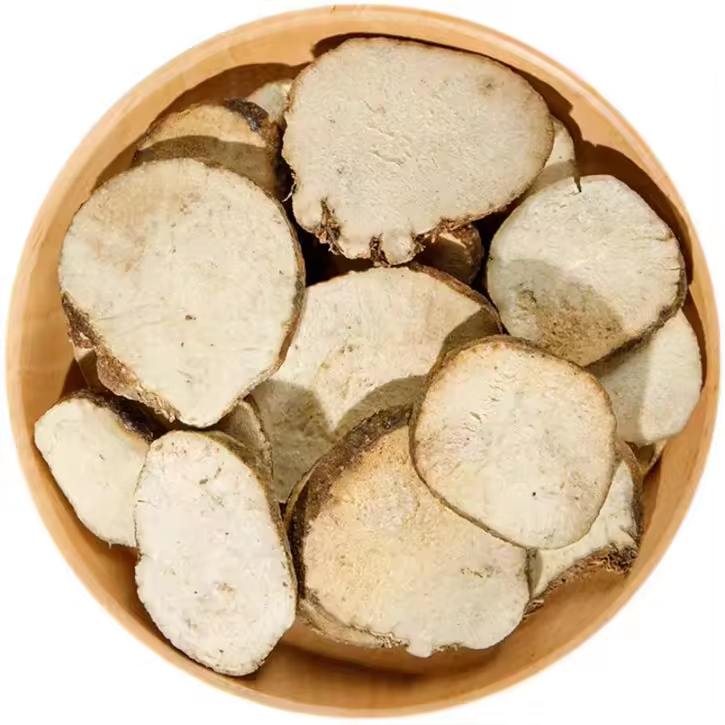


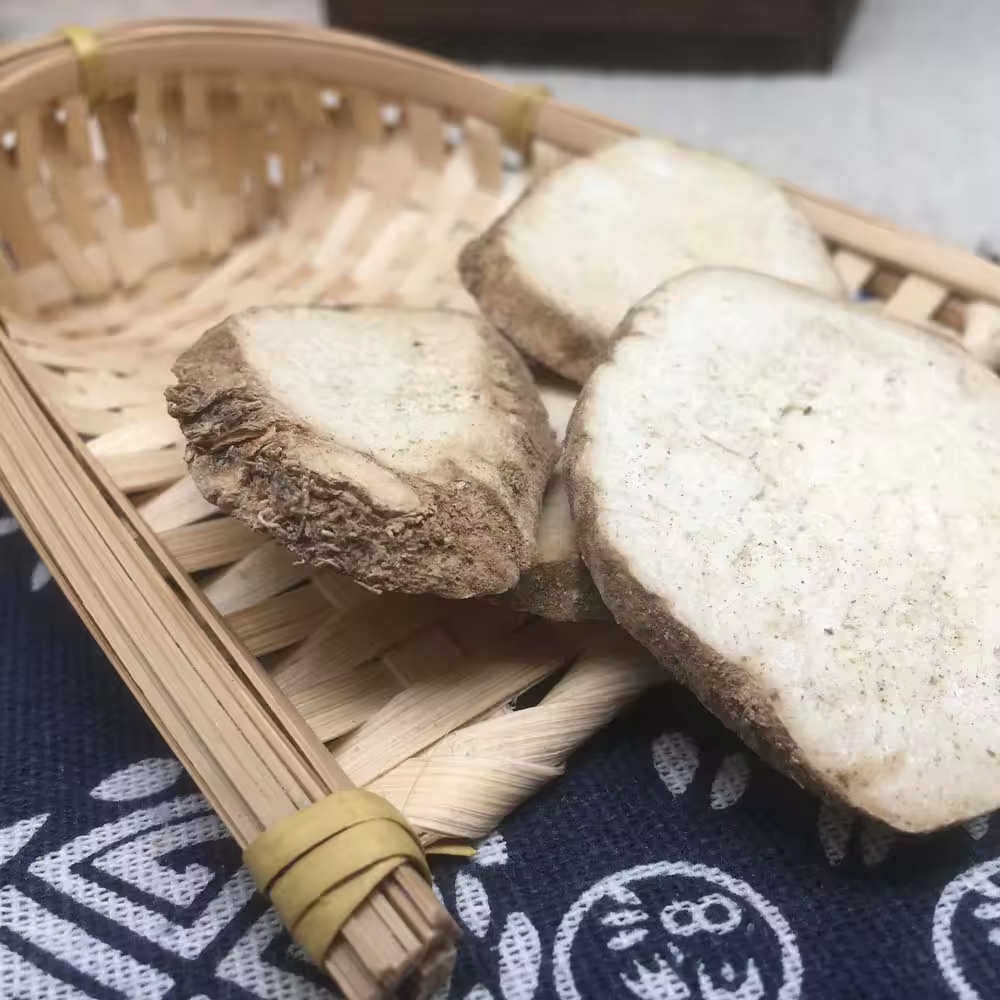


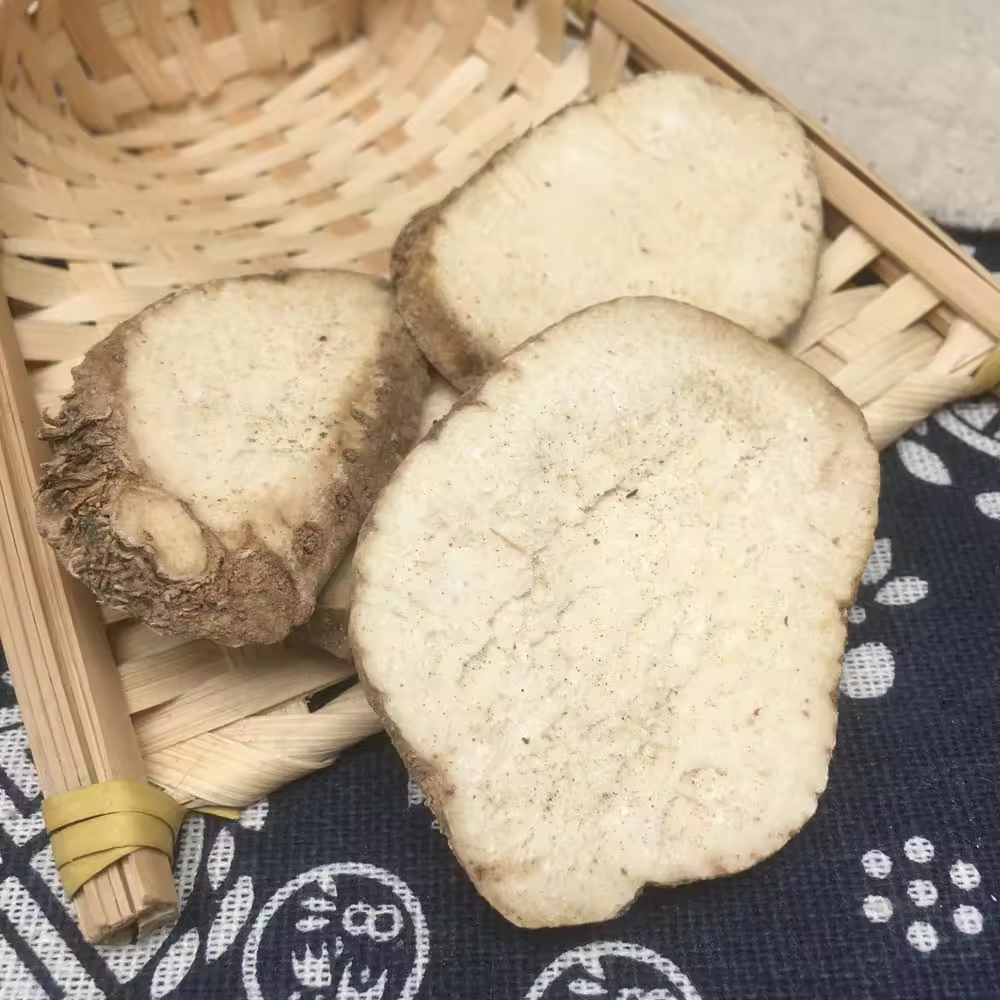

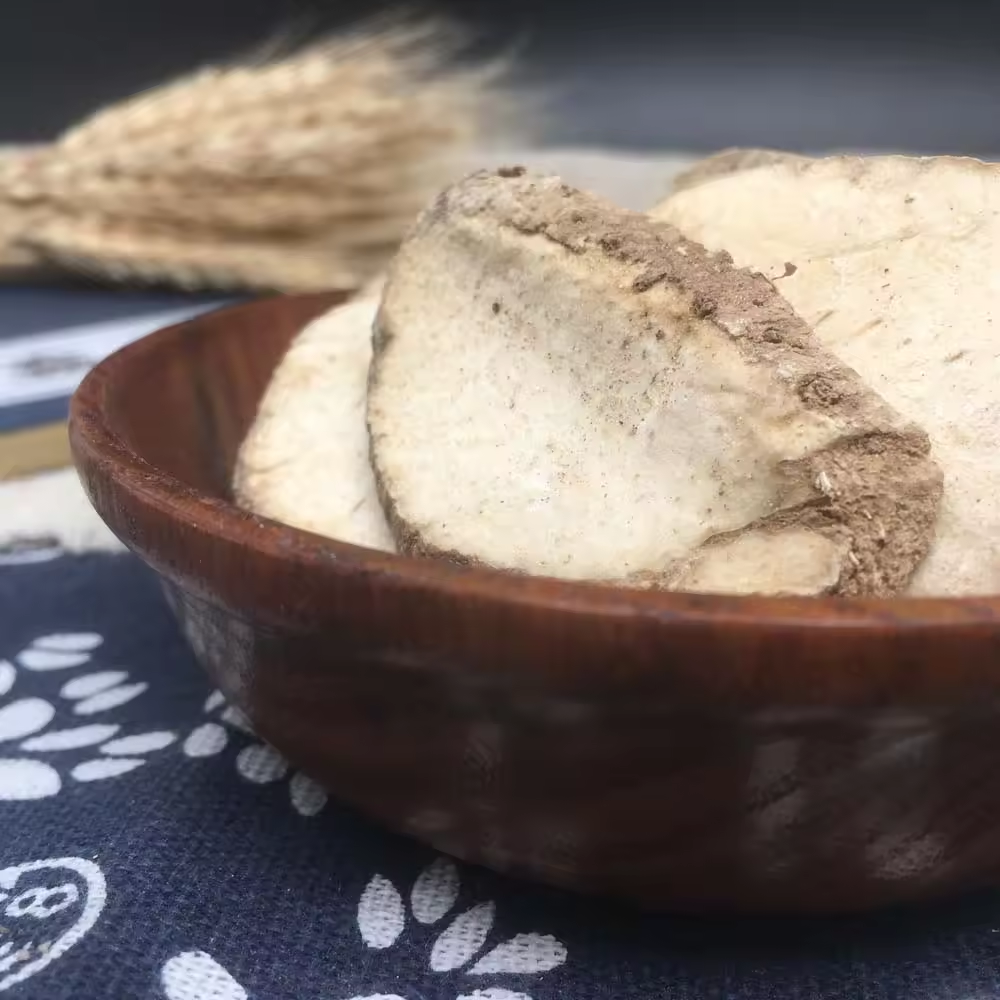
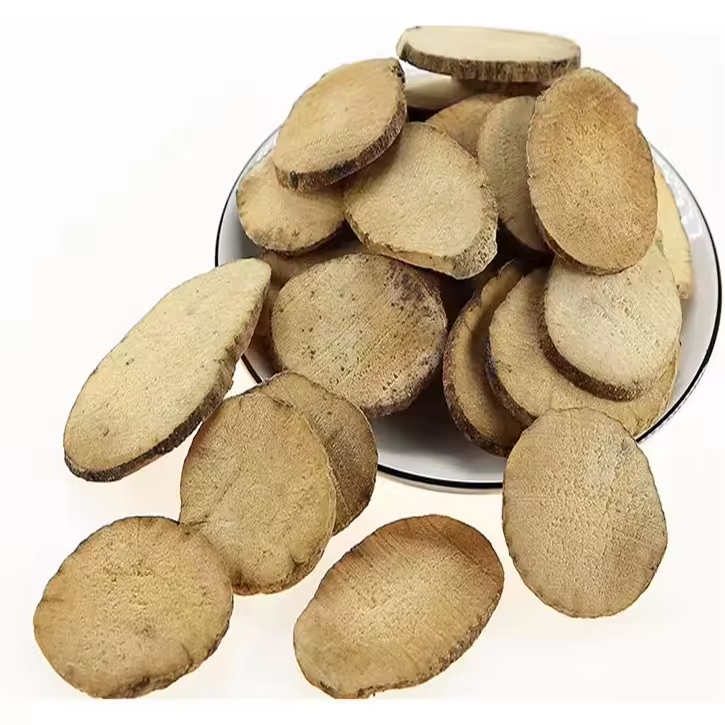

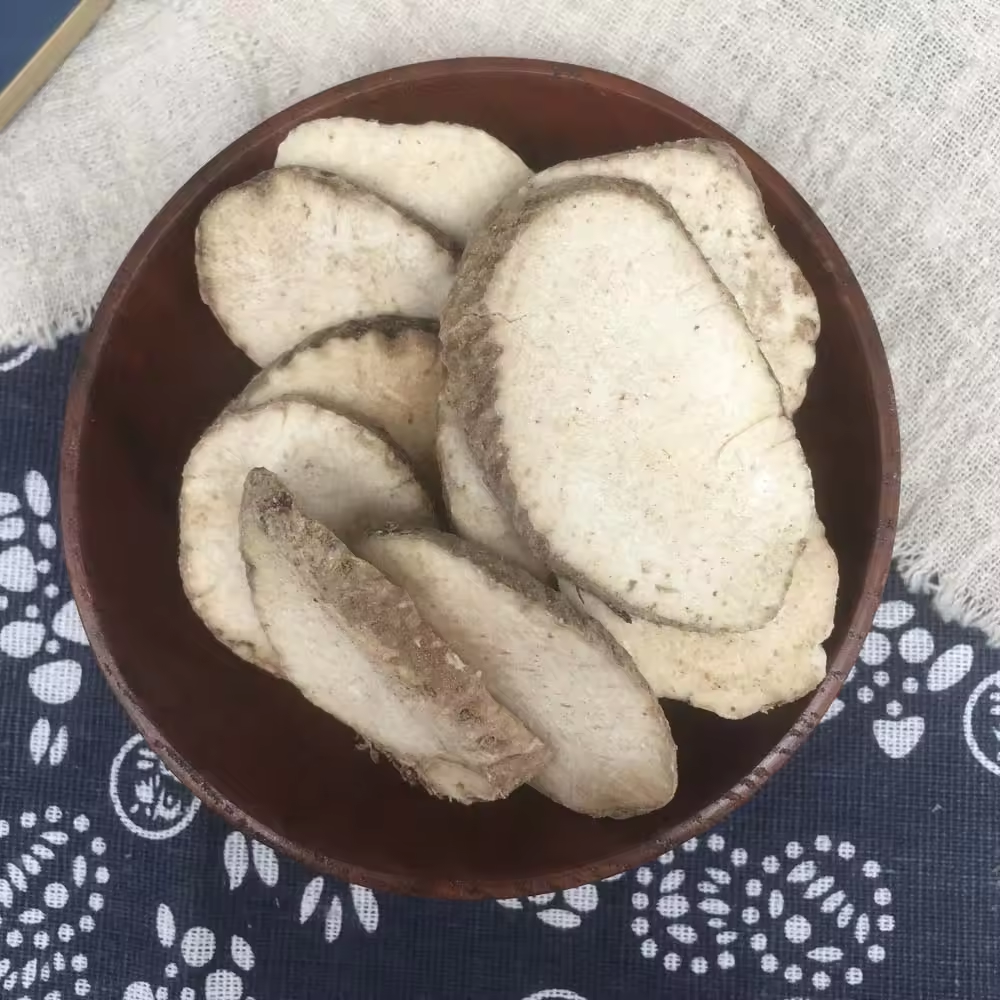
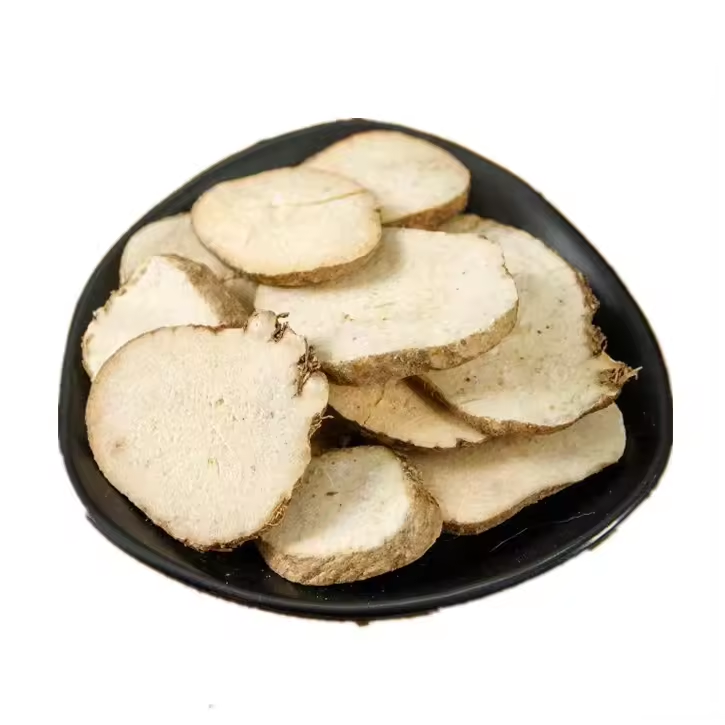
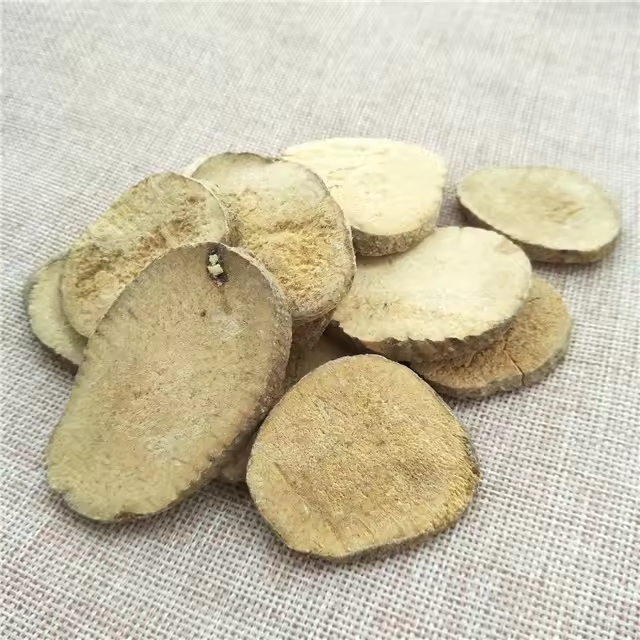




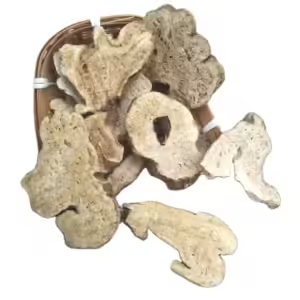
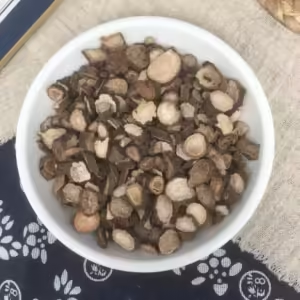
Reviews
There are no reviews yet.